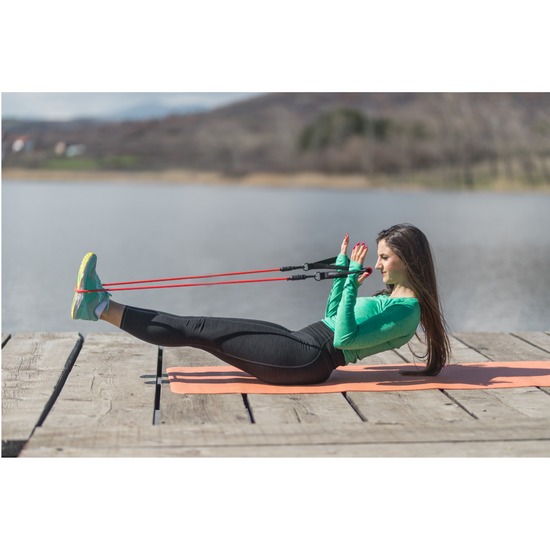You are ready to move, so you go out the door, do your PAKAMA workout, shower quickly and start your day as usual. Does this look familiar to you? If you are one of those people who focus on the actual workout and never really bother to warm up before or stretch afterwards, you might want to rethink your approach. That's because doing routines regularly before and after training is the key to feeling optimal and avoiding injuries.
One thing at a time: The importance of the warm-up
"Warming up prepares your body for the work ahead. It raises your body temperature and increases the blood flow to your muscles. These two things will help you perform better during your workout and reduce the risk of injury.
If we don't warm up properly, we are more likely to tear our muscles, sprain a joint or have a disc in our back. Muscles can be compared to a rubber band. When it is cold and you try to stretch it, it tends to tear or rupture. But if we warm it up first, we can stretch it to its full range of motion. Studies also show that warming up can reduce the feeling of sore muscles in the days after a strenuous workout (so-called delayed onset muscle soreness).
So how should we proceed? Think about moving your body to loosen things up. The old idea of static stretching before training is outdated - you want to get your body moving and increase your heart rate and body temperature. Start with light cardio exercises like jumping jacks or a light jogging. Then add some mobility such as lunges, leg swings or trunk turns. And finally, if you are planning strength training, make simpler versions of the movements you will perform in training. So if you plan to do deadlifts, imitate the same movement a few times without the barbell.
The crowning glory: The importance of cool-down
It is quite natural that you are always in a hurry, especially in the morning, as soon as the training is over. And it's so important to have exactly this time for an extensive cool-down. Without cooling down, the blood in the lower extremities and muscles can build up and blood pressure remains high. By stretching properly, the body can reverse these effects and remove waste products from the muscles, optimizing recovery and reducing pain in the days ahead.
The key is that the intensity gradually decreases. If you have been swimming, do a few easy laps. If you have been running, switch to walking. When your heart rate and breathing are closer to normal, you are ready to go.
🇬🇧 ENG
You're all set to exercise, so you walk out your front door, go to the next park for a PAKAMA workout session, then quickly shower and get on with your day. Does this sound familiar? If you're the kind of person who tends to focus on the actual workout and never really bother to warm up before or cool down after, you may want to rethink your approach. That's because regularly doing pre- and post-workout routines is key to feeling your best and avoiding injury.
First things first: The importance of warming up
"Warming up prepares your body for the work you're about to do It raises your body temperature and increases blood flow to your muscles. Those two things will help you perform better during your workout and reduce your risk for injury.
When you start a workout, you put physical stress on your body. If you don't warm up properly, you're more likely to tear a muscle, sprain a joint, or slip a disc in your back. Compare muscles to a rubber band. If it's cold and you try to stretch it, it's more prone to snapping or tearing. But warm it up first and you can stretch it to its full range of motion. Studies also show that warming up can reduce how sore you feel in the days after a tough workout (what's known as delayed onset muscle soreness).
So how should you go about it? Think about moving your body to loosen everything up. "The old idea of static stretching before a workout is outdated-you want to get your body in motion and get your heart rate and body temperature up. Start with light cardio like jumping jacks or an easy jog. Then move on to some mobility work, like walking lunges, leg swings, or torso rotations. Lastly, if you're planning on strength training, do easier versions of the moves you're going to do in the workout. So if you're going to perform deadlifts, mimic the same motion a few times without a barbell.
Ending on a high note: The importance of cooling down
It's natural to want to get on with your day as soon as you wrap up the workout, but build in a few minutes for a cool down. Without a cool down, blood may pool in the lower extremities and muscles and blood pressure stays high. Cooling down properly allows the body to reverse those effects and remove waste from your muscles, optimizing recovery and reducing pain in the coming days.
The key here is gradually going down in intensity. If you were swimming, take a few easy laps. If you ran, switch to a jog or walk. You're good to go when your heart rate and breathing feel closer to normal. Lastly, wrap it all up with some stretching. "You've primed your muscles already and everything's loose, so now is the perfect time to increase your range of motion.









